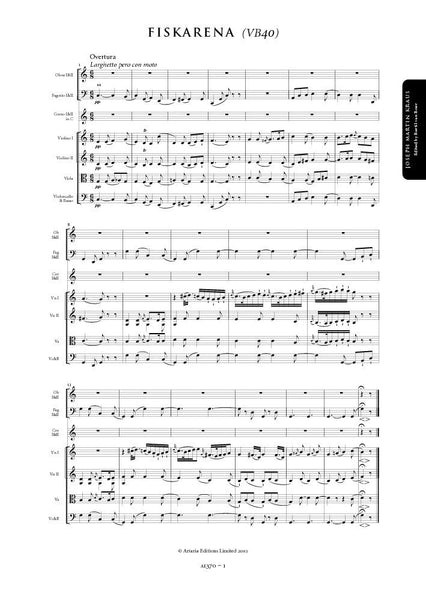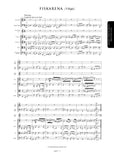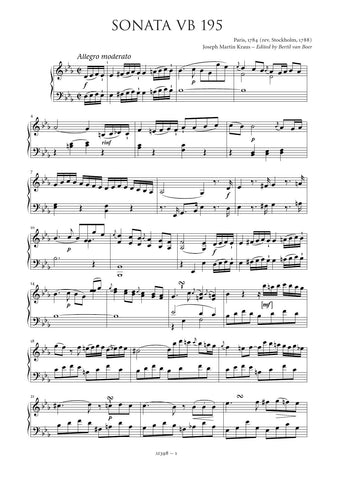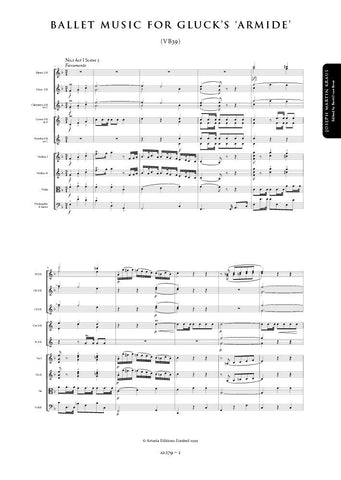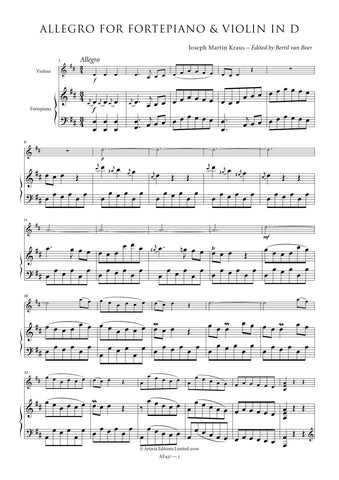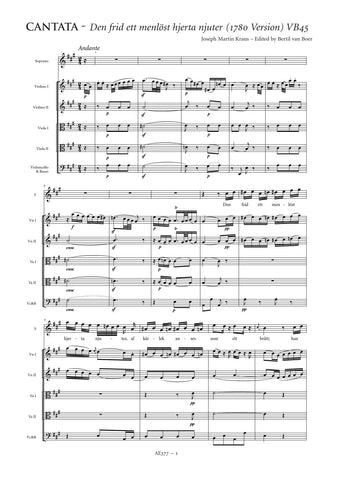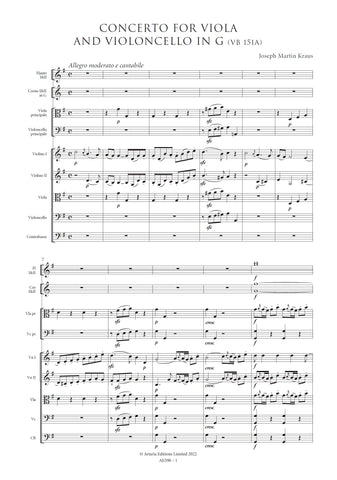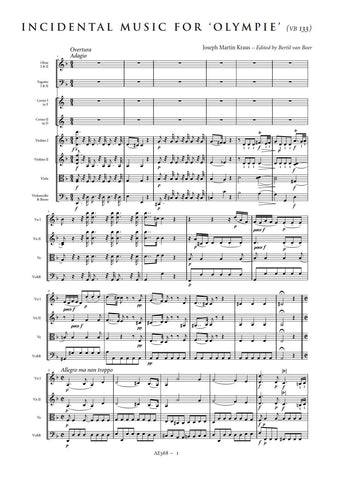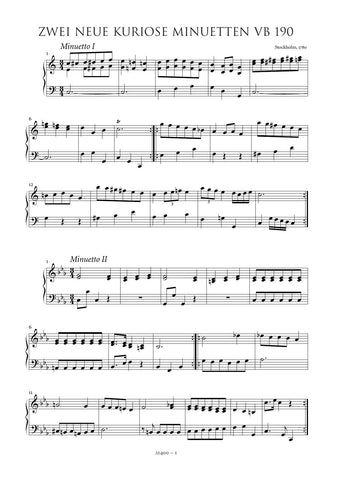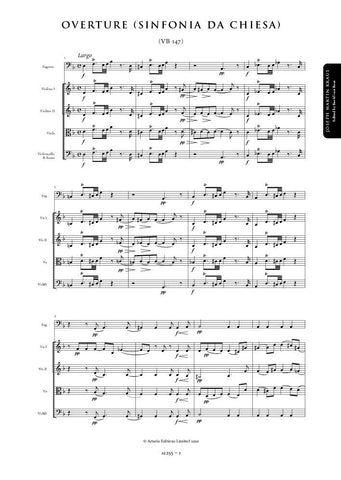Description |
Kraus, Joseph Martin (1756-1792)
|
||||||||||||||||
Audio sample |
|||||||||||||||||
Details |
The ballet Fiskarena, or The Girl from the Skerries (VB 40) was premiered on 9 March 1789 at the Royal Opera in Stockholm, the first in a series of Bournonville works that were to eclipse the main opera for several years in popularity. The choreography and plot of the story have not survived, but a comment in one of the instrumental parts - "Herr Ambrosius falls" - seems to indicate that it was an adaptation of the Marquis de la Salle's opera comique Les Pecheurs, which had been performed in a localized version entitled Skrgds flickan (The Girl from the Skerries) at Stenborgs comic opera theatre. The plot is wellknown from commedia dell'arte circles. Herr Ambrosius, a pompous old bore, is enamoured with his pretty ward, who in turn is in love with an English sailor. He catches the girl as she is being wooed and locks her away while running for a notary to marry them. She escapes with the sailor and his compatriot, who decide to turn the tails on the old man with the help of some gypsies. Dressed as a Gypsy woman, the sailor's friend entices Ambrosius into consenting to the match, and although he is annoyed to find himself tricked, he nonetheless joins in a contradance finale to celebrate the nuptials. The premiere was an immediate success. According to poet Johan Kellgren: "Bournonville caused a sensation among the Swedish public, who broke out into spontaneous applause and cries of 'Bravo' and 'Hurrah' without the prompting of the police and in the face of any Royal approval." It remained in the repertory of the Royal Ballet for over thirty years, receiving well over 80 performances and thus constitutes Kraus's largest stage success. This score is based upon two sources; a score now at the University Library in Uppsala under signature Instrumental music in manuscript Capsula 35, and a set of authentic parts (Stockholm, Operansbibliotek Pantomime Balletter F 1), which were the main use copies for the performances and contain the names of the orchestra members at the premiere. The latter have been somewhat marred by the various additions and cross-outs done during the performance history of the work, but the score, in the hand of Fredrik Silverstolpe, was done apparently prior to many of the emendations. The ballet consists of an overture and twenty musical numbers for varying instrumentation. Silverstolpe's score is carefully written, even preserving the numerous musical "shortcuts" (da capos, dal segnos, alternative sections and repetitions) found in the authentic parts and, presumably, the lost autograph score. Although it conforms to his usual standard of precision, Silverstolpe did have occasional lapses. For example, in No. 17 he writes "horns in E" although they are clearly in the tonic key A major. In No. 16, the flute parts are not written out, but rather simply state "all" ottava col oboe" and later on "all' ottava alta col oboe" which would seem to imply that the first is at the same octave and the latter an octave higher. But the actual flute parts where they come in within the first measures are clearly meant to mean the latter, although later on it is equally clear that "at the same octave" is required. This edition has placed them according to their logical musical conclusions, even at the expense of Silverstolpe's (and the original parts') indications, which seem inconsistently applied. The use of ornamentation, slurring, accidentals, markings, etc. are also not consistent; these have been regularized where necessary to conform to vertical alignments; Kraus himself was notorious for requiring different markings in parallel passages, and so the editor has attempted to preserve this individual compositional quirk. The editor has also written out the various dal segnos and da capos in order to clarify the actual internal order and organization of the movements. It is extremely clear that both Kraus and Bournonville meant for there to be a means of lengthening or shortening the work through optional repeated sections, depending perhaps upon the circumstances of each performance. This is a revolutionary notion that allows for the work to be performed in a modular sort of manner without compromising its overall integrity. Silverstolpe, without realizing it, retained the indications as sectional double bars in many of the movements. These have been retained and are adaptable for any modern choreographer. Those optional repeated sections have been noted with an asterisk (*) in the score, and it is suggested that performers/conductors use their discretion as to which and how many of these to use; it should also be noted that an "uncut" performance repeating all of the marked sections will more than double its length and so should be used with caution. Bertil van Boer |
||||||||||||||||
Score Preview (best viewed in full screen mode) |
|||||||||||||||||
Loading...
Error




